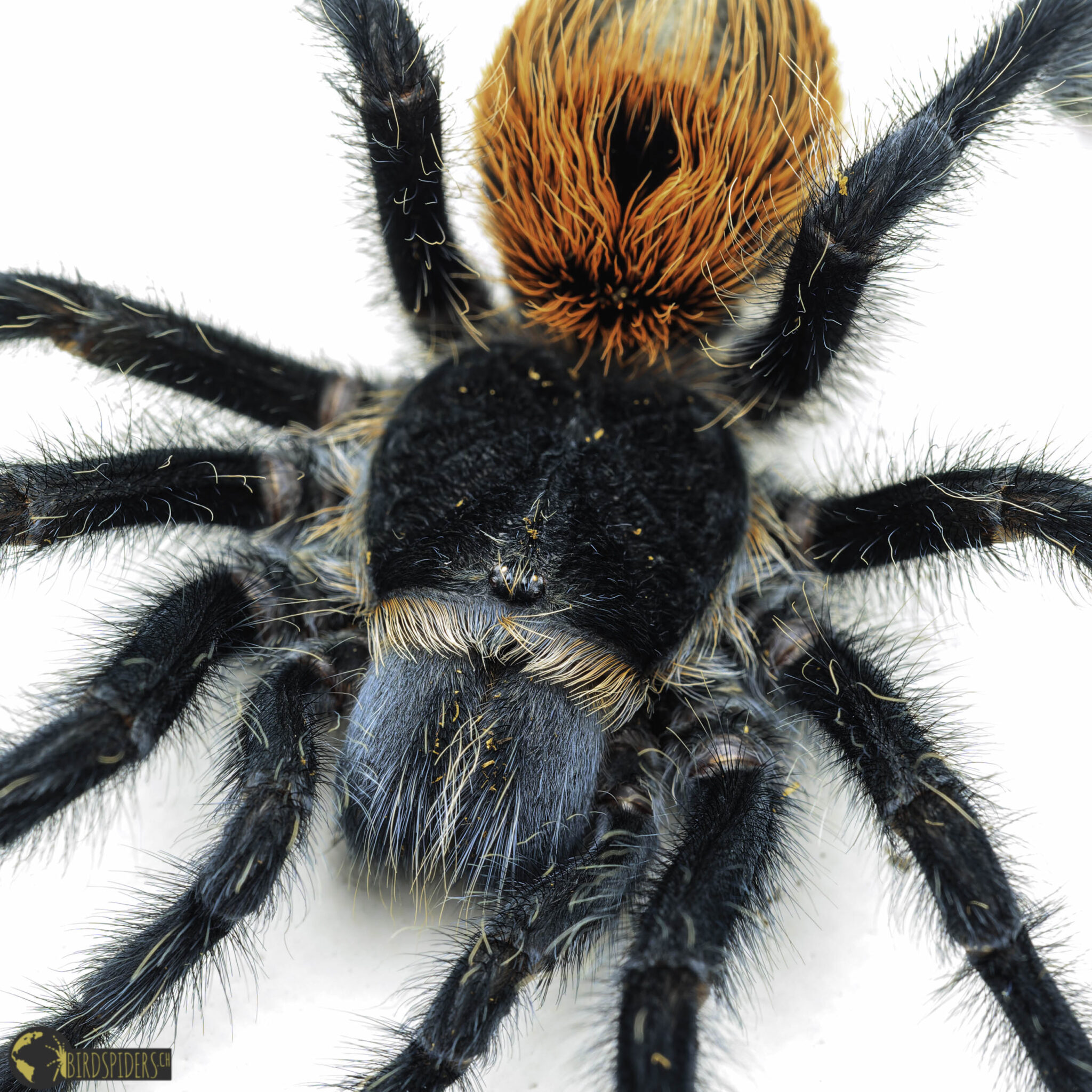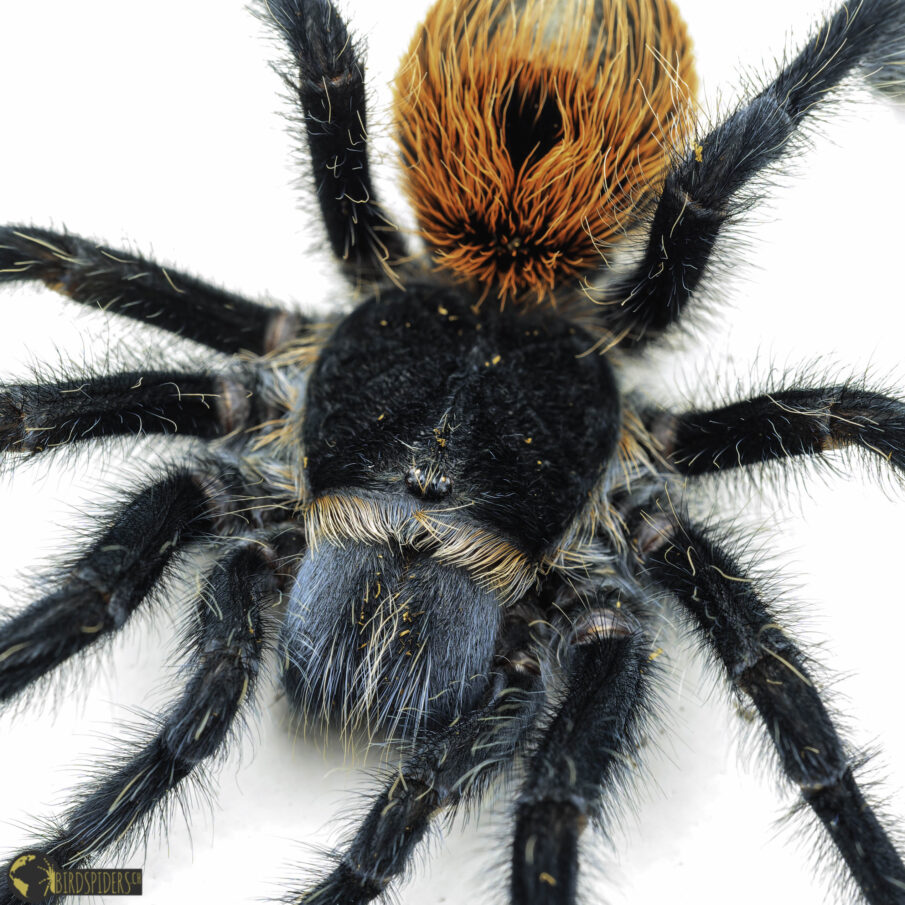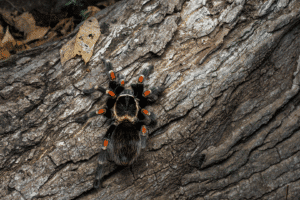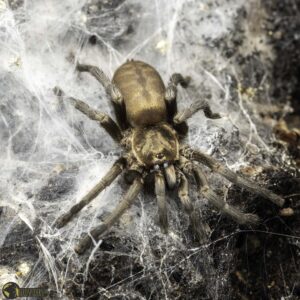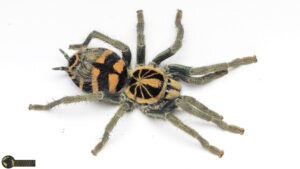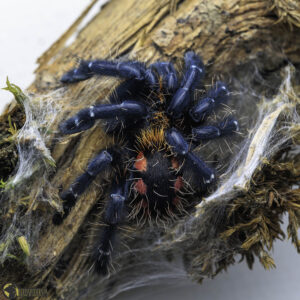Overview
Discover the fascinating Grammostola iheringi, a large and striking tarantula species native to Brazil. Known for its beautiful urticating hairs and distinctive coloration, this tarantula captivates enthusiasts and researchers alike. Grammostola iheringi is one of the biggest members of its genus, with females reaching leg spans of over 20 cm (about 8 inches). This species plays an important role in its ecosystem, and understanding its natural history and care requirements helps promote conservation efforts.
Natural History of Grammostola iheringi
Grammostola iheringi, also called the Entre Rios tarantula, inhabits regions in Brazil where it creates spacious burrows. Unlike many tarantulas that prefer ambush hunting, G. iheringi is quite active and often seen moving around its enclosure or natural habitat. It uses a stalking tactic to hunt prey, which is unusual for its genus. The species has a dark red opisthosoma (abdomen), velvety black legs with a subtle blue tint, and a black carapace bordered by orange. Females can live over 20 years, growing up to 23 cm (9 inches) in leg span, making them one of the largest Grammostola species.
In the wild, G. iheringi experiences a natural diapause—a period of reduced activity—lasting two to three months at around 15°C (59°F). This seasonal pause is important for successful mating and triggers females to molt annually and males to build sperm webs. Hatchlings are relatively large, with leg spans of 1-2 cm (0.4-0.8 inches), and juveniles grow quickly, reaching hand-sized dimensions in about 1.5 years.
Taxonomy & Systematics of Grammostola iheringi
Grammostola iheringi belongs to the family Theraphosidae, which includes tarantulas, within the order Araneae (spiders). It was first described by Keyserling in 1891. The genus Grammostola is known for its generally docile species, but G. iheringi stands out due to its more active and defensive behavior.
- Kingdom: Animalia
- Phylum: Arthropoda
- Class: Arachnida
- Order: Araneae
- Family: Theraphosidae
- Genus: Grammostola
- Species: G. iheringi
Its venom contains a toxin named GiTx1, which affects voltage-gated ion channels. While not dangerous to humans, this toxin causes disorientation and paralysis in prey, highlighting the tarantula’s effective hunting adaptations.
Husbandry of Grammostola iheringi
For those interested in keeping Grammostola iheringi as an exotic pet, it is important to replicate its natural environment to ensure health and well-being. This species prefers slightly more humid conditions than its relative Grammostola rosea. Providing a substrate depth of about 10 cm (4 inches) is recommended to accommodate its habit of building large, spacious burrows.
G. iheringi is quite lively and often seen roaming its terrarium, so a secure enclosure with enough space is essential. Maintaining a temperature around 22-26°C (72-79°F) with a humidity level slightly higher than typical Grammostola species will help mimic its natural habitat. A seasonal temperature drop to about 15°C (59°F) for 2-3 months can encourage natural behaviors such as molting and mating readiness.
Breeding this species in captivity remains challenging, with few successful pairings reported. However, juveniles grow quickly and can reach a hand-sized leg span within 18 months, making them rewarding for experienced keepers.
References
- Fear Not Tarantulas, Inc. “Grammostola iheringi (Entre Rios Tarantula).” Retrieved 2022-11-26.
- cancerides. “Grammostola iheringi (Entre Rios).” Tom’s Big Spiders, 2015. Retrieved 2022-11-26.
- Montandon GG, Cassoli JS, Peigneur S, et al. “GiTx1(β/κ-theraphotoxin-Gi1a), a novel toxin from the venom of Brazilian tarantula Grammostola iheringi.” Biochimie, 2020;176:138–149. doi:10.1016/j.biochi.2020.07.008.
- King GF, Gentz MC, Escoubas P, Nicholson GM. “A rational nomenclature for naming peptide toxins from spiders and other venomous animals.” Toxicon, 2008;52(2):264–276. doi:10.1016/j.toxicon.2008.05.020.
